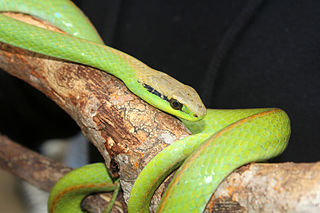
Altair is the brightest star in the constellation of Aquila and the twelfth-brightest star in the night sky. It has the Bayer designation Alpha Aquilae, which is Latinised from α Aquilae and abbreviated Alpha Aql or α Aql. Altair is an A-type main-sequence star with an apparent visual magnitude of 0.77 and is one of the vertices of the Summer Triangle asterism; the other two vertices are marked by Deneb and Vega. It is located at a distance of 16.7 light-years from the Sun. Altair is currently in the G-cloud—a nearby interstellar cloud, an accumulation of gas and dust.

Violaceae is a family of flowering plants established in 1802, consisting of about 1000 species in about 25 genera. It takes its name from the genus Viola, the violets and pansies.
The DAMA/NaI experiment investigated the presence of dark matter particles in the galactic halo by exploiting the model-independent annual modulation signature. Based on the Earth's orbit around the Sun and the solar system's speed with respect to the center of the galaxy, the Earth should be exposed to a higher flux of dark matter particles around June 1, when its orbital speed is added to the one of the solar system with respect to the galaxy and to a smaller one around December 2, when the two velocities are subtracted. The annual modulation signature is distinctive since the effect induced by dark matter particles must simultaneously satisfy many requirements.

Xenodontinae is a subfamily of snakes in the family Colubridae.

The Ascarididae are a family of the large intestinal roundworms. Members of the family are intestinal parasites, infecting all classes of vertebrates. It includes a number of genera, the most well known of which are:

The western dwarf gecko, also known commonly as Guibé's dwarf day gecko, is a small species of gecko, a lizard in the family Gekkonidae. The species is endemic to Madagascar.

Langstonia is an extinct genus of notosuchian crocodylomorph of the family Sebecidae. It lived in the middle Miocene, in the "Monkey Beds" of the Colombian Villavieja Formation. Langstonia was named in 2007 by Alfredo Paolillo and Omar Linares for fossils originally described by Langston in 1965 as Sebecus huilensis. Thus, the type species is L. huilensis.
Jean Marius René Guibé was a French naturalist, especially a herpetologist. He was born on 18 February 1910 in Paris and died on 4 May 1999 in Caen. He was professor at the Paris National Museum of Natural History.
CPD−57°2874 is a B[e] supergiant in the constellation Carina. It is a rare star as it is hot but has dust which shows forbidden lines and IR emissions. In 2007 the high spatial and spectral resolution of the star's circumstellar envelope was studied. This was the first time such a study was carried out on a class B[e] supergiant.
Caryospora is a genus of parasitic protozoa in the phylum Apicomplexa. The species in this genus infect birds and reptiles with the majority of described species infecting snakes. It is the third largest genus in the family Eimeriidae.

Philodryas olfersii is a species of venomous snake in the family Colubridae. The species is endemic to South America.

Oxyrhopus guibei is a species of snake in the family Colubridae. The species is endemic to South America. It is often called the false coral snake, but this common name can refer to any of a long list of other species, genera, and even entire families of snakes. Many nonvenomous snakes have evolved coloration that mimics that of venomous true coral snakes, a trait which helps them avoid predation.
The Korea Invisible Mass Search (KIMS), is a South Korean experiment, led by Sun Kee Kim, searching for weakly interacting massive particles (WIMPs), one of the candidates for dark matter. The experiments use CsI(Tl) crystals at Yangyang Underground Laboratory (Y2L), in tunnels from a preexisting underground power plant. KIMS is supported by the Creative Research Initiative program of the Korea Science and Engineering Foundation. It is the first physics experiment located, and largely built, in Korea.
Ingenia is a genus of marine nematode worms native to Brazil, with a single known species, I. mirabilis. It belongs to the Tripyloididae, which is a group that are mostly free-living and which feed on diatoms and other algaes.
Oxyrhopus formosus is a neotropical snake of the family Dipsadidae. Its distribution is not fully understood, because of inaccurate identifications and confusion with other Oxyrhopus species. It has been reported from Brazil, Colombia, and Peru. Reports from the Guiana region are based on misidentified O. occipitalis. Oxyrhopus formosus are robust, the head is entirely yellow, and adults are red with prominent black bands; O. occipitalis are slender, the snout is yellow and the top of head is brown, and adults are red with faint crossbands.

Dipsadinae is a large subfamily of colubroid snakes, sometimes referred to as a family (Dipsadidae). They are found in most of the Americas, including the West Indies, and are most diverse in South America. There are more than 700 species.
Xenopholis undulatus, Jensen's ground snake, is a species of snake in the family Colubridae.

Philodryas patagoniensis, also known as the Patagonia green racer, is a species of rear-fanged (opisthoglyphous) venomous snake in the family Colubridae. The species is endemic to cis-Andean South America from northern Argentina to northeastern Brazil; despite its name, most of its range is outside Patagonia.

NGC 4179 is a lenticular galaxy located in the constellation Virgo. It was discovered by William Herschel on January 14, 1784. It is a member of the NGC 4179 Group of galaxies, which is a member of the Virgo II Groups, a series of galaxies and galaxy clusters strung out from the southern edge of the Virgo Supercluster.










